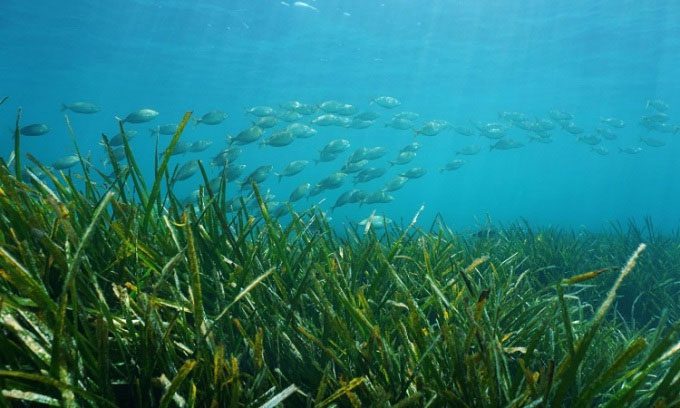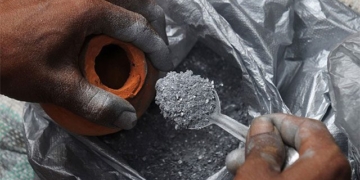Marine scientists have discovered a seagrass meadow covering more than 66,000 km2 in the Bahamas, significantly increasing estimates of the amount of seagrass present on Earth.

Underwater Seagrass Meadow. (Photo: Tech Explore).
In a study published in the journal Nature Communications on November 1, scientists describe the seagrass ecosystem in the Bahamas as one of the largest in the world. It is estimated that the seagrass covers an area of at least 66,045 km2, according to Austin Gallagher, the executive director of the non-profit ocean conservation organization Beneath the Waves.
Gallagher stated that this ecosystem is likely the most important blue carbon reservoir (referring to carbon absorbed and stored by marine ecosystems) on the planet. “Carbon enters the ocean through natural interactions between the atmosphere and the sea surface in the carbon cycle. Seagrass absorbs this carbon through photosynthesis. When seagrass transports carbon through its tissues, burying and storing it in the root system, it forms a carbon reservoir. Seagrass can store carbon indefinitely,” Gallagher explained.
The goal of Gallagher and his team’s research is to map the seagrass in the Bahamas, using data from 15 tiger sharks equipped with tracking devices to capture images of the seafloor. This information will be combined with reports from 2,500 diver surveys.
Seagrass consists of dozens of species of flowering plants that live entirely underwater, producing energy through photosynthesis by absorbing light. Like their terrestrial relatives, seagrasses have roots, leaves, and can produce seeds. They grow in coastal saltwater areas worldwide, often concentrated in shallow waters where sunlight is more abundant. They can form meadows spanning thousands of square kilometers.
Due to the photosynthetic process, seagrasses effectively store the greenhouse gas carbon dioxide. This is because photosynthesis requires plants to use sunlight to convert carbon dioxide into oxygen. These underwater plants play a crucial role in carbon sequestration, thereby storing carbon in the environment rather than allowing it to float freely in the atmosphere and continue contributing to global warming.


















































